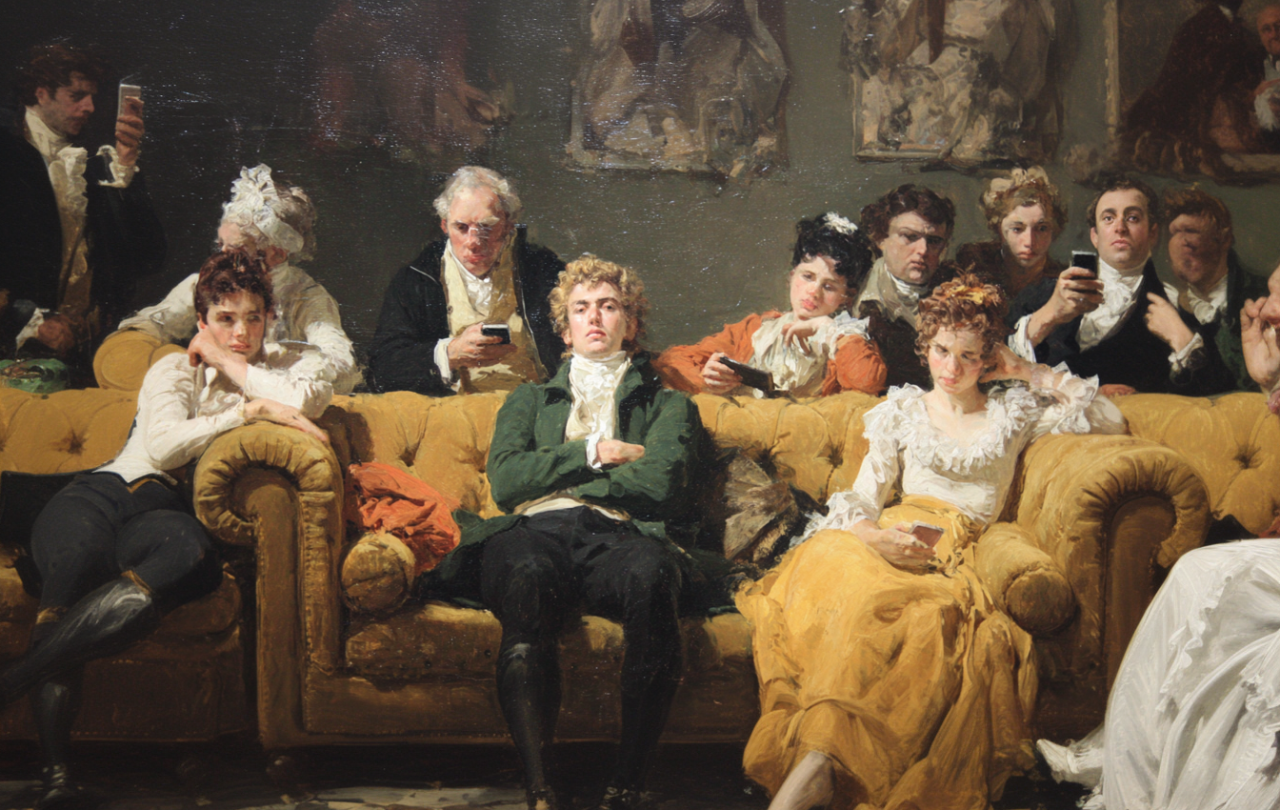
The 21st century is witnessing a crisis of temperance, self-discipline, and self-control. Lent is one way to combat this.
According to the international Leader Character framework, there are eleven “character strengths” important for human wellbeing and good leadership. These include virtues like justice, accountability, courage, and good judgment. Researchers have used this framework to perform thousands of studies on teams and groups of people around the world. These studies show that, almost without exception, temperance is the weakest virtue in every team everywhere. (Not quite every person – each team has one or two members with strong temperance, but temperance is still weakest on average for a group).
The modern world is not only intemperate: it actively encourages the opposite: immediate gratification of desires. Every day we are bombarded with online ads, posters, and TV commercials that tell us to ‘Indulge yourself’; ‘treat yourself’, ‘look after yourself’, along with images of sensually pleasing people and objects. It is a rare advert that appeals to your calm rationality and long-term thinking. The advertising industry knows that it can make much more money from people who lack self-control. If it targets your basic animal impulses, then you are more likely to buy things you don’t need and wouldn’t have thought of without ad’s enticing promise.
Temperance is the power to choose what you won’t regret choosing later on.
Worse still, there are elements of Western thought that praise intemperance as a virtue and pathologize restraint as a psychological disorder. Elements of Freudian psychoanalysis, popularised in the media, suggest that you do damage to your mental health if you suppress your desires or try to hide them. It is far healthier to give free rein – to sexual desire first of all, but to all desires in the end. Temperance is no longer a virtue to be admired, but a neurotic vice that fills your subconscious with envy, bitterness, and psychological problems.
What is temperance anyway and why is it a problem if we lack it?
Temperance is self-control. It is acquired by self-discipline. Its purpose is to organise and order your many desires, giving priority to the ones that matter most to you. Let’s say you want to lose weight, and you also want to eat that doughnut you can see in the shop window. Or you want to save money to buy a house, but you also want that new and larger TV screen. Those are competing desires. Temperance is the power to choose what you won’t regret choosing later on. It doesn’t tell you what you ought to choose: it simply gives you control over your desires so you rule over them instead of them ruling you.
What does lack of temperance look like? Whenever you keep doing something you wish you didn’t keep doing, you are being intemperate. I don’t mean one-time actions that you later regret. I mean things you know you’ll regret even before you do them, yet you still do them. Things like: smoking (for most people), eating too much, browsing Instagram or TikTok instead of working, failing to show up for gym class. It can also mean any kind of procrastination: avoiding doing a task you know you have to do but don’t want to do ‘now’. In sum, it reveals a disorganisation in your priorities and goals, so a lesser priority subverts a higher priority because it’s more immediately available and enjoyable.
We need temperance if we’re going to be happy with where our lives are going
The problem with lacking temperance is that it undermines your own goals for your life and makes your future self a helpless victim of your present self. It leads to a downward spiral of the heart of intemperance is that some desire, some pleasure, some indulgence, has gained so much power over our life that we no longer have control over it. It is in the driving seat, not us. Intemperance is also a cause of self-hatred and low self-esteem. One of the best ways to feel better about yourself is to set long term goals and stick to them. It makes you feel like you’re heading somewhere good.
By contrast, the heart of temperance is to subordinate everything we think, feel, and enjoy to our will, our clear-headed decisions about the kind of person we want to be in the long-term. We need temperance if we’re going to be happy with where our lives are going. Temperance is even needed for worldly success. Warren Buffett once said, “Investing is not a game where the guy with the 160 IQ beats the guy with the 130 IQ. Once you have ordinary intelligence, what you need is the temperament to control the urges that get other people into trouble.”
Why is temperance so lacking in our own time? I can think of at least two reasons.
First, we are one of the wealthiest societies ever to exist. Wealth may have benefits, but it also enables us to get what we want, when we want it. Wealthy people are less used to having their desires unsatisfied than poor people. Unfulfilled longing is a less common occurrence for the rich, so there is little natural opportunity to exercise the muscle of self-denial.
Secondly, we are one of the least religious societies ever to have existed. In contrast to secularism, religion has always had practical tools to cultivate temperance. All major world religions have ritual practices of fasting and feasting designed to exercise and strengthen self-discipline. Every year Muslims endure the gruelling discipline of Ramadan. Orthodox Christians restrict themselves to a vegan diet during the forty days of lent, and many other Christians give up some indulgence. Both rich and poor share alike in this voluntary self-denial. Now that these practices are eroding away, they are being replaced not by other self-discipline practices, but by the worship of I-want-it-here-and-now. This is shown most poignantly in the 2000 movie Chocolat, which explicitly puts up sensual indulgence in competition to traditional religion and abstinence – and indulgence wins.
But the decline of religion has done more than this: it has also undermined the sense of transcendent purpose in many people’s lives – which was what motivated them to look beyond their physical desires. Without hope and without a larger sense of meaning to life, people have less reason to sacrifice short-term pleasures for the sake of longer-term goals.
Nor are sensual desires the only way we can be intemperate. An outburst of rage on social media is a sign of intemperance.
I don’t mean that short-term pleasures are always bad, or that sensual desire is evil in itself. The whole point of temperance is that it involves the right amount, and not too much, of something good. That is what makes it so tricky. If eating a doughnut was like stealing or violence, we would have a stronger voice telling us not to do it. But because it’s not bad in itself, we find it harder to resist. We need temperance to say no to something good when we’ve already taken enough of it, so we don’t take too much.
Nor are sensual desires the only way we can be intemperate. An outburst of rage on social media is a sign of intemperance. A father who spends too long in the office and not enough time with his children is being intemperate. He is sacrificing the long-term goal of healthy family relationships for the short-term goal of career success. We lack the self-control to express our anger in the right place at the right time.
Temperance is needed for so many of the other virtues to function. If you’re not temperate, then you will be late for meetings, fail to deliver work on time, or makes too many commitments that you can’t keep. You’ll be a liability to your friends and colleagues.
Temperance doesn’t tell you what you should aim for in life. But no matter what you aim for, you won’t get it without temperance. So, what are you giving up for lent?





